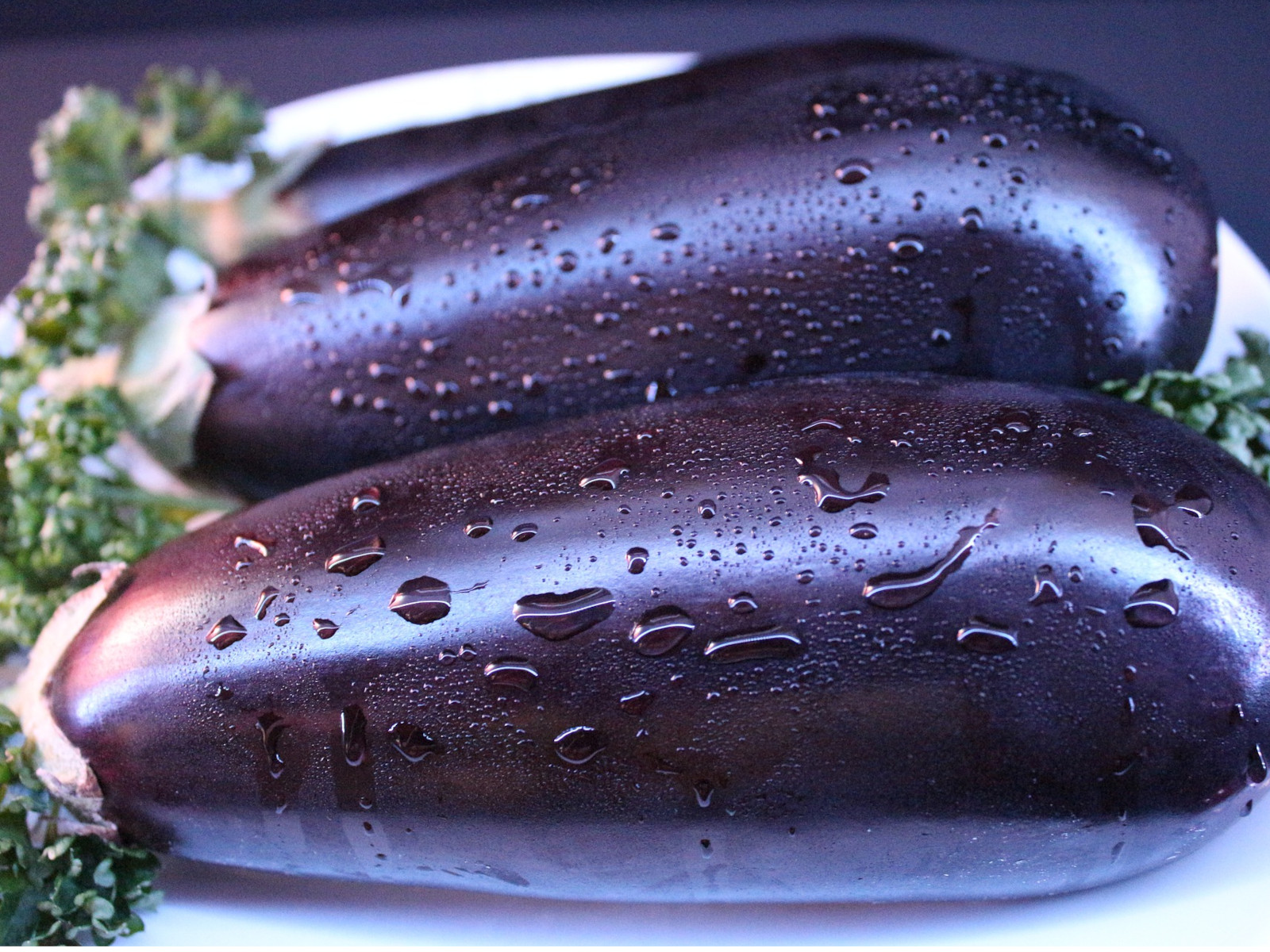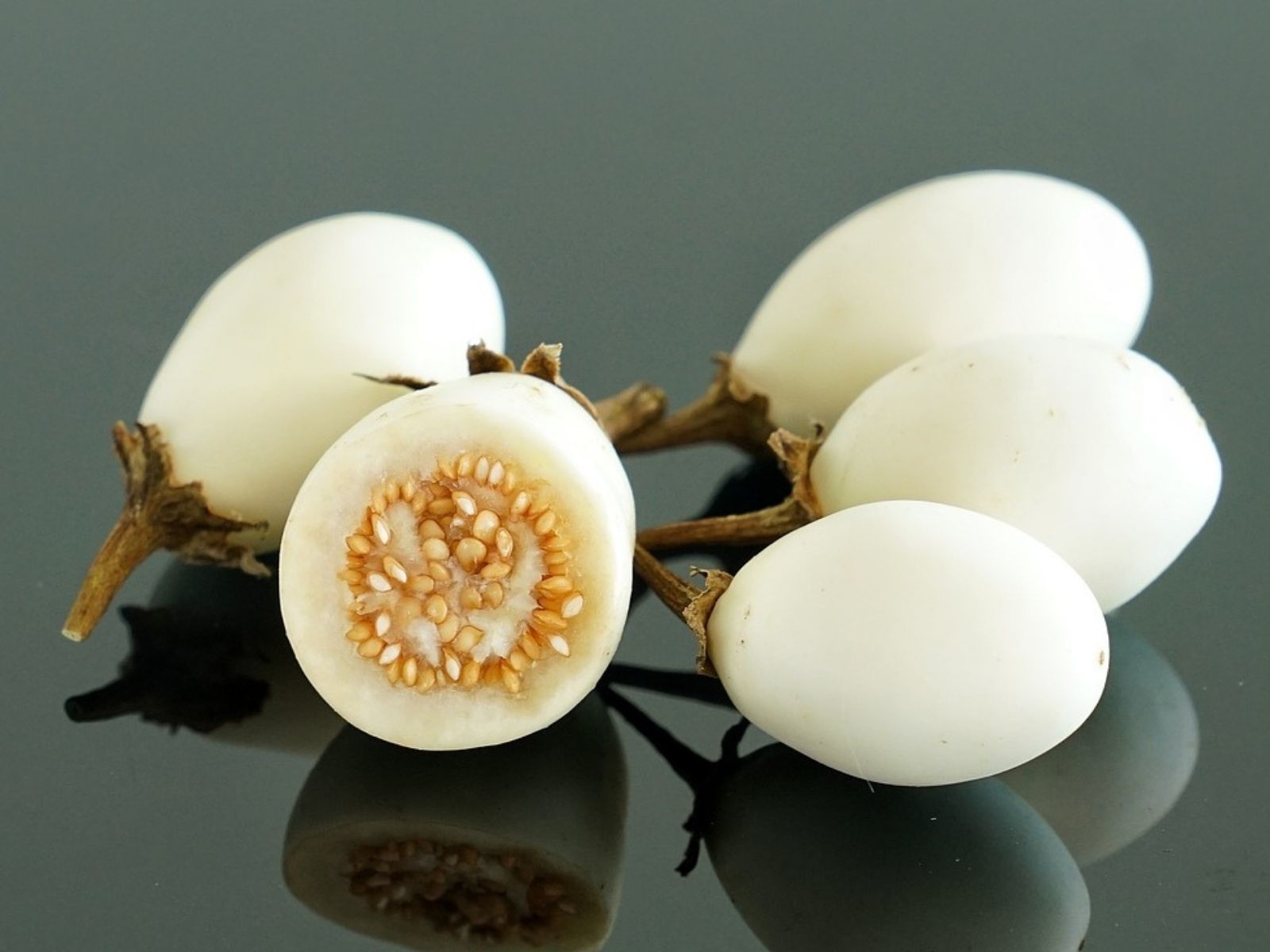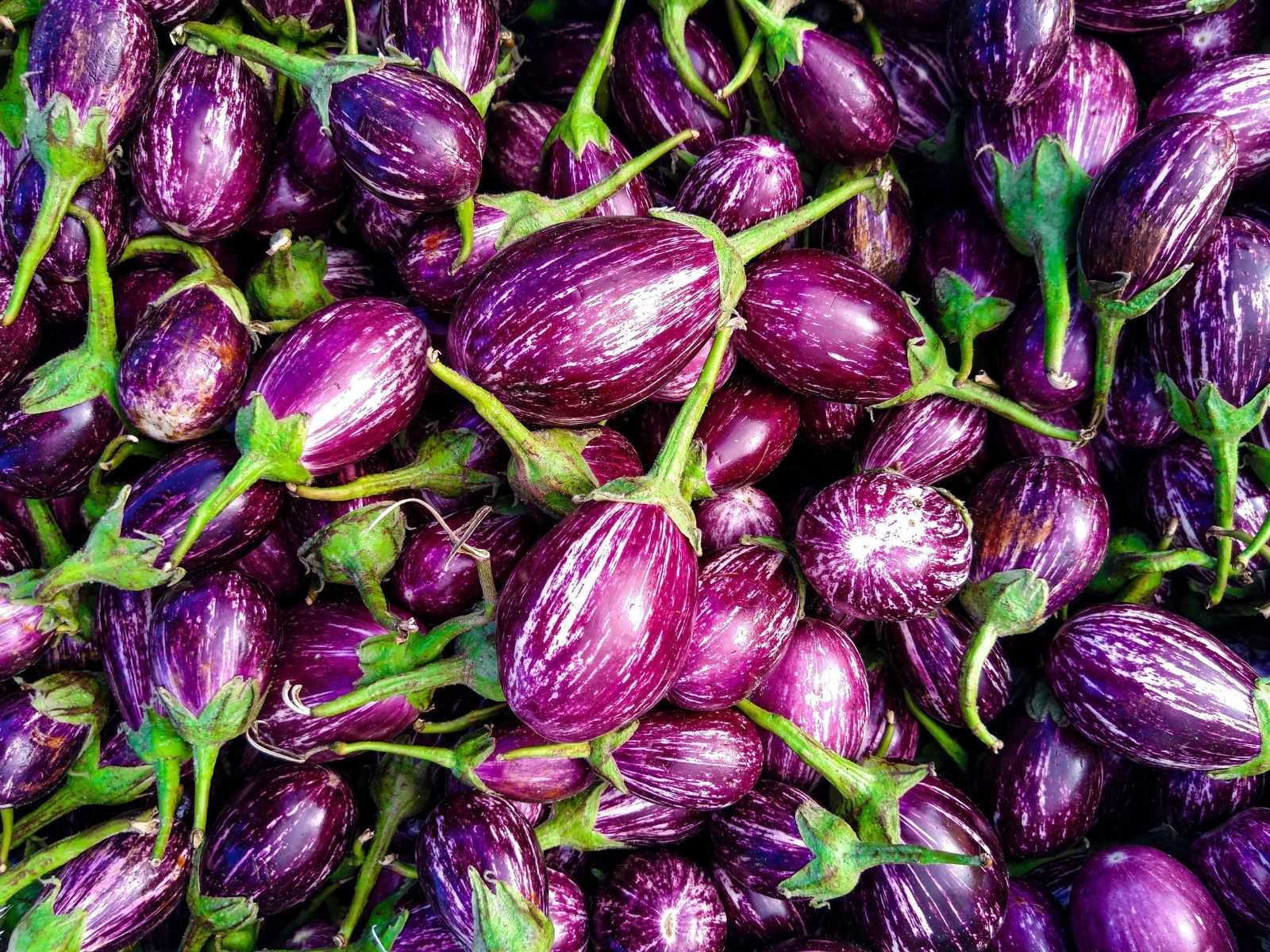The smooth surface, the glossy shades of purple with many hues... to those who live in southern Europe, aubergines bring memories of bright summer days, Mediterranean atmospheres, scents of basil and herbs, windows wide open on a deep-blue sea and clear sky. Of course, it is not the same for those who buy their eggplants in a supermarket in London or in Paris: greenhouse cultivation has made them available on our tables all year round… This may sound like a nice thing, but we have so
many good reasons to eat only seasonal fruit and vegetables! But what do we like about eggplants? Among other things, they are more versatile than you would imagine, and can be refined protagonists even in
deserts.
Yet, hidden behind a curious name lies a history that is some thousands of years old, which stards far from the shores of the Mediterranean: in the Asian continent.

Poison and delight
Scholars tell us that the first to introduce eggplant in cooking, over 4000 years ago, were societies in India, where the plant grew spontaneous and perennial. They used to consume them in brine and with hot spices to mitigate the bitter taste, but above all to reduce their toxicity. It is difficult to imagine that such a delicacy could hide pitfalls for our health, and yet so it is. Like other species belonging to the Solanaceae family, aubergines conceal, in their skin, the presence of solanine, an alkaloid that plants use to defend themselves from parasites and insects and which is toxic for our body, unless it is neutralized by strong salting, or by cooking, or with other techniques.
In Europe it took us centuries to understand this. But first things first. In Asia, aubergines spread throughout Southeast Asia in very ancient times and it appears that by the 1st century BC they were cultivated extensively also in China. Later in time the eggplant made its way to the West: it reached Persia and through the Islamic world it landed in Europe around the 8th century AD, with the Arab conquest of Andalusia. And what about their strange name? Well, some of the eggplants actually did look like eggs some centuries ago, and in particular the first variety that made its way into England was white and egg-shaped. Their other English name, aubergine, is a borrowing from French. French borrowed the word from Catalan, while the Catalan word is itself a borrowing from Arabic al badinjian. In fact, many of the names of eggplants in languages of southern Europe sound alike because they ultimately come from this Arabic word.
 Almost a Snow White’s apple...
Almost a Snow White’s apple...
For centuries however, once it made it into Europe, the eggplant remained enveloped by a negative aura, and was often considered a poisonous fruit. It is only during the fifteenth century that we start finding the first recipes. Yet, reading a fifteenth-century book from Tuscany entitled Novellino, we discover that: "Master Taddeo, lecturing medicine, explained to his students that whoever ate eggplants for nine days would go mad; and proved it according to physics". Aubergines were thought to cause madness, epilepsy, hysteria, mood swings, and darkening of the skin of the face. For a long time this vegetable was, in the eyes of Europeans, a carrier of unhealthy qualities and harmful to physical and mental well-being, a bewitched food that only some peoples, such as Muslims and the Jews, were able to deal with without serious consequences for health. In 1513 the agronomist Gabriel Alonso de Herrera went as far as to affirm that it was introduced in Europe for the primary purpose of poisoning Christians. And a distant echo of these ideas can still be found in times much closer to us. For instance, in the beautiful novel by Gabriel Garcia Marquez entitled Love in the time of cholera, published in 1985, one can read about the protagonist who: “hated aubergines since she was a child, even before having tasted them... it seemed to her that they had the colour of poison”.
On the other hand, somewhere around the times of the Renaissance, the terrible fame of the aubergine was enriched and somehow bettered by the reputation of being an aphrodisiac food. For instance, in Machiavelli's Clizia the aubergine is described as the “apple of love” and in Occitan language it has the very explicit name of vietase, meaning “donkey penis”.
Cooking slowly changed the eggplant fame and destiny, transforming it into a tasty food for our well-being, with excellent nutritional values. In fact, if the high fibre content, typical of many fruits and vegetables, help regulate the intestine and helps reducing the absorption of sugars, the abundance of water and the presence of potassium, iron and calcium gives it purifying, anti-inflammatory, remineralizing and restorative properties, even at the bone level. The bitter taste hides the presence of antioxidants, which are useful against bad cholesterol and against the activity of free radicals, while contributing to prevent many problems, including heart ones. Moreover, the eggplants antioxidants help soothing the oxidative stress to which our skin (and in particular the skin of the face) is subjected daily. In fact, a popular tradition of Italy has it that the pulp, crushed with a fork and applied to the skin – alone or with yogurt – for at least twenty minutes, gives relief and nourishment while smoothing the skin. We haven't tried this concoction!
And it comes in so many shapes, colours and flavours!

In addition to its beneficial properties, the aubergine has an inestimable value: it is a supreme pleasure for the eyes and palate, with its great variety of shapes and shades of colour.
The Italian Ministry of Agriculture has registered over 60 types in our country alone. The most common is dark purple, with a strong and spicy flavour and an elongated shape: this is typical of the “long Palermo” and of the “Neapolitan violet”. But the list could go on for a while: there’s the very shiny Black Beauty; the “common” aubergine of Florence, with very compact pulp; or the Prosperosa (literally, the prosperous one!), that is particularly resistant to oxidation. Shall we not mention the Elegant White, very sweet and with few seeds, of Anatolian origin? Or can we leave out the White Round, with its beautiful skin and pink hues? And how about the red aubergine from Rotonda, small in size, round in shape and with a red colour so vivid that it looks like a tomato?
Whichever variety they belong to, when used in Italian cuisine, aubergines are usually cut into slices and placed in a colander, then sprinkled with salt and kept for at least two hours, so as to lose the liquids in excess and part of the characteristic bitter taste.
Today, they have fully entered the culinary tradition of many Mediterranean countries and are part of some of the most representative recipes. Just think of the Greek moussaka, the Spanish berenjenas con queso, the French ratatouille or, among the most famous dishes of our country, the eggplant parmigiana, the caponata or the pasta alla norma.
Here in Italy, there are endless preparations: fried, grilled, pickled, steamed, in oil, baked, roasted, even caramelized with fruit or covered with cocoa cream in the exquisite recipe of chocolate aubergines, typical of the Amalfi coast.
Delightful to the taste, wonderful to the eye and to the touch, delicious to the nose, flexible in inspiring the chef’s imagination and creativity... forgetting its poisonous peel and loving all its rich goodness only takes the time of the first bite!


